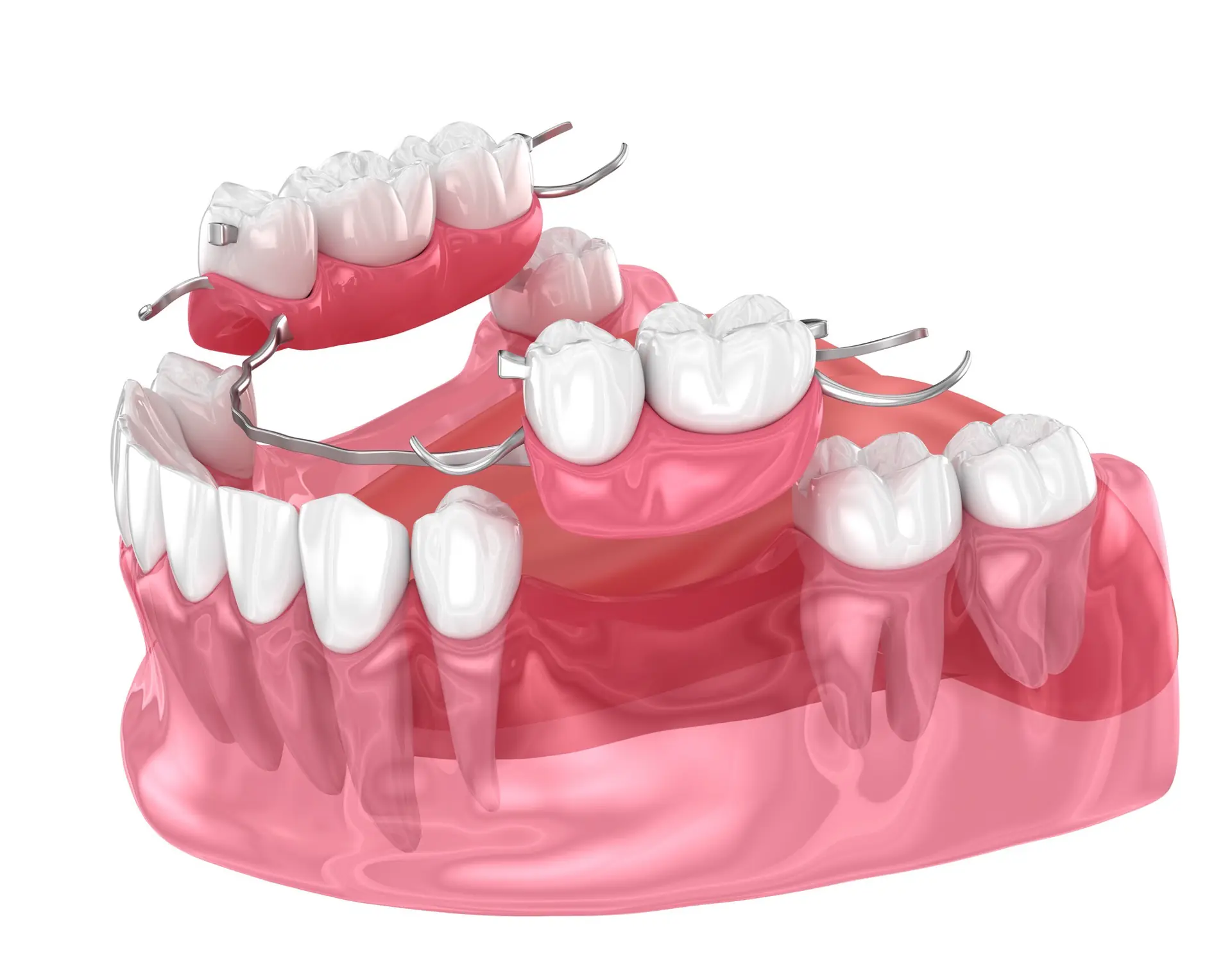When you lose a tooth or multiple teeth, it’s easy to focus solely on the cosmetic side of things—how your smile looks, whether you’re self-conscious about gaps, or if you’re avoiding certain foods because they’re hard to chew.
But dental bridges offer more than just an aesthetic fix. These life-changing restorations have a profound impact on both your health and confidence, providing a range of benefits that last a lifetime. In this blog, we’ll explore the long-term advantages of dental bridges and why they’re worth considering as part of your oral restoration plan.
What are the Long-term Health Benefits of Dental Bridges?
Dental bridges are designed to fill in the gap left by one or more missing teeth. They’re typically anchored to the adjacent natural teeth or implants and are made of durable materials such as porcelain or metal. While they’re often associated with improving the appearance of your smile, they also come with a host of health benefits that go far beyond cosmetic restoration.
Preserving Jaw Health
One of the key long-term health benefits of dental bridges is the preservation of your jawbone. When a tooth is lost, the bone structure that once supported it begins to deteriorate. This is known as bone resorption, and it happens because the bone no longer has a tooth to stimulate it through regular chewing. Over time, this can lead to changes in the shape of your face, a shrinking jawline, and even further tooth loss.
A dental bridge helps to prevent bone loss by providing the necessary stimulation to the jaw, encouraging healthy bone growth and preservation. By filling in the gap, a bridge helps maintain the integrity of your facial structure and prevents the bone from deteriorating, ensuring long-term oral health.
Preventing Shifting of Surrounding Teeth
Another significant health benefit is the prevention of surrounding teeth shifting into the gap left by a missing tooth. Teeth are held in place by their neighboring teeth and the pressure from chewing. When a tooth is lost, the adjacent teeth can begin to drift into the empty space, which can cause bite misalignment, crooked teeth, and uneven wear.
By restoring the gap with a dental bridge, you not only keep your smile looking natural but also prevent the surrounding teeth from shifting. This helps maintain a proper bite and avoids the need for future orthodontic treatments or more extensive restorative work.
Reducing the Risk of Gum Disease
When there’s a gap in your smile, it can be challenging to clean the area thoroughly, especially if the gap is between your teeth. This can lead to food particles getting trapped, plaque buildup, and an increased risk of gum disease. Dental bridges close the gap, making it easier to clean your teeth and gums properly.
Moreover, because bridges are custom-made to fit the shape of your mouth and gums, they help create a smooth and seamless surface that’s easy to maintain. This reduces the chances of plaque accumulation and, in turn, lowers the risk of gum disease and tooth decay in the long run.
How Do Dental Bridges Help Restore Facial Structure and Appearance?
Dental bridges are often seen as an aesthetic solution for missing teeth, and for good reason. They not only restore your smile but also contribute significantly to the overall appearance of your face. Missing teeth can lead to several visible changes in your facial structure, such as sagging cheeks, a sunken look around the mouth, and a less youthful appearance. A dental bridge works to counter these effects, restoring both form and function to your face.
Preventing Sunken Cheeks and Facial Collapse
When you lose teeth, especially the molars at the back of your mouth, the lack of support can cause the cheeks and lips to sag inward, creating a sunken, aged appearance. This can make you look older than you are and affect your self-esteem. Dental bridges restore the missing teeth, providing the necessary support to the cheeks and lips, keeping your face looking fuller and more youthful.
Maintaining a Natural, Balanced Smile
One of the greatest advantages of dental bridges is their ability to restore a natural, balanced smile. Unlike dentures that may feel bulky or uncomfortable, bridges are fixed and custom-made to match the size, shape, and color of your natural teeth. This results in a smile that looks and feels natural, making it easier to enjoy everyday activities like smiling, speaking, and laughing without the worry of gaps or discomfort.
The appearance of your teeth affects not just your smile but also your overall confidence. By filling in missing teeth, dental bridges help restore your appearance to its optimal state, improving your facial structure and boosting your self-confidence.
Can Dental Bridges Improve Your Ability to Chew and Speak Clearly?
When a tooth is missing, it can have a significant impact on your ability to chew food properly and speak clearly. This might seem like a minor inconvenience, but over time, the inability to chew properly can lead to digestive issues and strain on your remaining teeth. Additionally, missing teeth can make it difficult to pronounce certain words, affecting your speech.
Dental bridges help restore the full functionality of your teeth, improving both chewing and speaking abilities.
Restoring Chewing Functionality
When a tooth is missing, your remaining teeth take on the extra burden of chewing, which can lead to uneven wear and potential damage. Missing molars in particular can make it difficult to chew certain foods properly, leading to poor digestion or discomfort when eating. Dental bridges fill the gap, allowing you to chew your food properly without strain on your remaining teeth. This helps maintain proper digestion and overall oral function.
Additionally, with the gap filled, your bite is restored to its proper alignment, which ensures that no teeth are overcompensating for the missing ones. This reduces wear and tear on your teeth, helping you maintain optimal oral health for years to come.
Improving Speech Clarity
A missing tooth can make certain sounds difficult to pronounce. For example, the letter “s” may sound like a whistle, or “th” might become muffled. By restoring the tooth with a bridge, you restore your ability to speak clearly and naturally. The bridge fills in the gap, improving the flow of air through your mouth and allowing for proper articulation of words. This is especially important for individuals who rely on clear speech for their careers or social interactions.
In essence, dental bridges not only enhance the appearance of your smile but also bring back the full functionality of your teeth and mouth, making everyday tasks like chewing and speaking more comfortable and natural.
What Factors Should Be Considered When Choosing a Dental Bridge For Restoration?
Choosing the right dental bridge for your restoration requires careful consideration of several factors to ensure a perfect fit and long-lasting results. Below are some of the key elements to take into account when making your decision:
Material Options
Dental bridges are made from various materials, each with its own advantages. The most common materials include:
- Porcelain: Known for its natural appearance, porcelain is the most popular choice for bridges in the front of the mouth. It mimics the color and texture of natural teeth.
- Porcelain-Fused-to-Metal (PFM): This option offers strength and durability, making it ideal for back teeth. It combines porcelain’s aesthetics with the sturdiness of metal.
- Metal: Metal bridges are highly durable and resistant to wear. They’re often used for teeth in the back of the mouth where strength is more important than appearance.
Support System
Dental bridges can be supported by your natural teeth or dental implants. The type of support chosen will depend on the condition of your remaining teeth, your oral health, and your budget. If your adjacent teeth are healthy, a traditional bridge may be the best choice. However, if your remaining teeth are weakened or missing, implant-supported bridges may offer greater stability and long-term benefits.
Longevity
Dental bridges are designed to last many years, but their lifespan depends on factors such as the material used, your oral hygiene, and your overall health. Porcelain bridges typically last 10-15 years, while metal-supported bridges can last even longer. Proper care, such as regular brushing and flossing, can help ensure that your bridge lasts for years to come.
Cost
The cost of dental bridges can vary depending on the material, type of support, and complexity of the restoration. However, considering the long-term health and functional benefits, a dental bridge is a worthwhile investment that can significantly improve your quality of life.
Overall Health Considerations
Before choosing a dental bridge, it’s important to discuss any existing health issues with your dentist. Certain conditions, like gum disease or weakened jawbones, may require additional treatment before a bridge can be placed.
Dental bridges are about much more than filling gaps in your smile. They provide long-term health benefits, improve facial appearance, restore chewing and speaking abilities, and prevent further dental complications.
By carefully considering the type of bridge that best suits your needs and maintaining proper care, you can enjoy a functional, beautiful smile for years to come. So, if you’re dealing with missing teeth, don’t just think of a dental bridge as a cosmetic fix—it’s a lifelong investment in your oral health and overall well-being.
Ready to Restore Your Smile and Health? Schedule a Consultation with River District Dentistry Smiles Today!
If you’re missing teeth and looking for a solution that restores both your smile and overall well-being, dental bridges might be exactly what you need. At River District Dentistry Smiles, we specialize in creating custom, high-quality dental bridges that not only fill gaps but also improve your oral health, facial appearance, and daily function. Don’t let missing teeth affect your confidence or comfort any longer.
Our experienced team is here to help guide you through the process, providing personalized recommendations that are best suited to your needs. Whether it’s enhancing your ability to chew, speak, or simply restoring the natural beauty of your smile, dental bridges can change the way you experience life.


